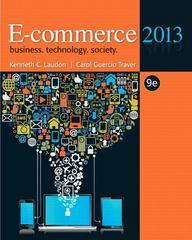Question
ECON 4721, Money & Banking Reference: Modeling Monetary Economics (2016, Fourth Edition, Cambridge University Press) by Bruce Champ, Scott Freeman and Joseph Haslag Suppose a
ECON 4721, Money & Banking
Reference: Modeling Monetary Economics (2016, Fourth Edition, Cambridge University Press) by Bruce Champ, Scott Freeman and Joseph Haslag
Suppose a government faces the following constraints on its ability to raise revenue:
In each period, the most it can raise through all taxes, including seigniorage, is T=946 goods.
The maximum real government debt that the fixed population can willingly hold, given the limitations of their endowments, is B=968 goods. Government debt pays a real rate of return of x=1.16.In period 1, government expenditures are equal to G=1,144 goods. Suppose no debt was issued in the previous period. The current leaders detest government expenditures but know they will not be in power next period. To severely limit the next government's options, the current leaders choose to cut taxes and seignorage revenues to 0. They instead choose to finance the entire amount of government expenditures through issuing debt. What is the maximum amount the next government will be able to expend? Round your answer to the closest integer.
Step by Step Solution
There are 3 Steps involved in it
Step: 1

Get Instant Access to Expert-Tailored Solutions
See step-by-step solutions with expert insights and AI powered tools for academic success
Step: 2

Step: 3

Ace Your Homework with AI
Get the answers you need in no time with our AI-driven, step-by-step assistance
Get Started


